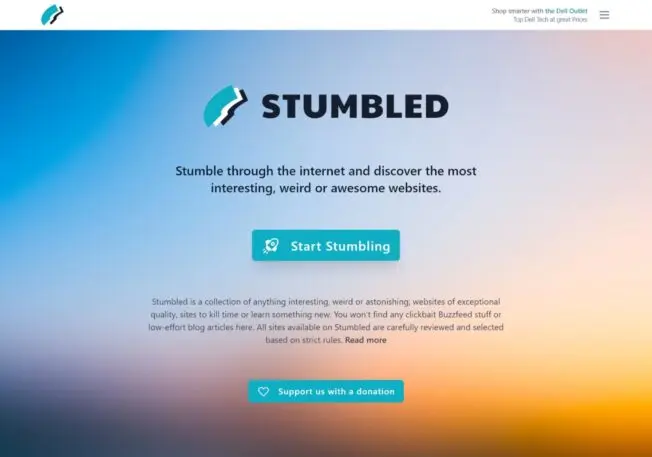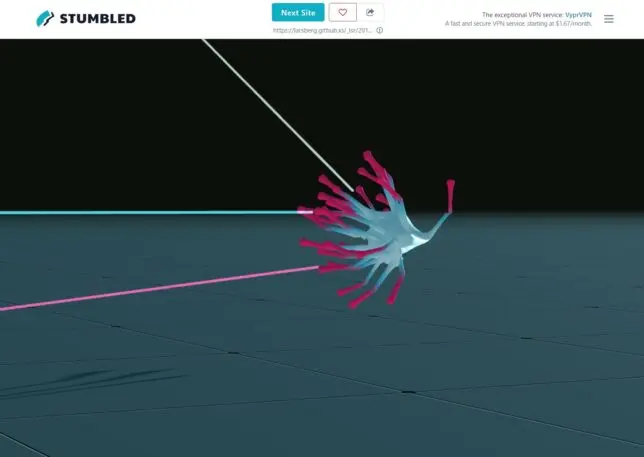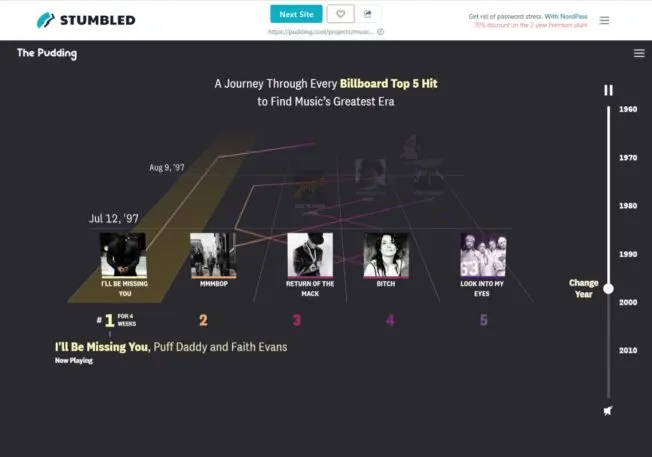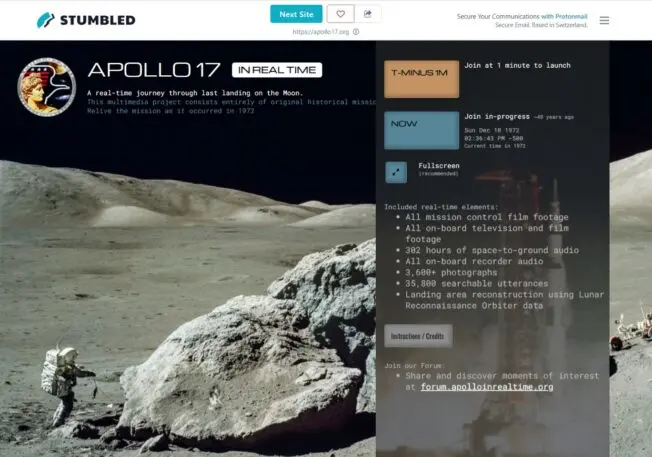Back before Twitter consumed the bulk of my spare internet time, I used to love discovering websites on StumbleUpon.
The web 2.0-era site presented you with a little orange Stumble button. Pressing it would sweep you away to a seemingly random spot on the internet, with a persistent StumbledUpon menu so you could keep stumbling to more sites after that. Surfing the web through StumbleUpon always led to some strange and interesting places, and it felt joyful in a way that social media and search engines seldom do.
Although StumbleUpon shut down in 2018, a developer from Berlin named Kevin Woblick has brought the idea back with a new site called Stumbled.cc (or just Stumbled for short). Click the blue Stumbled button, and you might see a 3D visualization of the world’s population, a pixelated aquatic ecosystem to play with, a deep dive into spalted wood art, or random footage of goats.

That sense of boundless possibility is exactly what made StumbleUpon so fun to use in the mid-aughts, and it’s a reminder of what we lost by moving the bulk of our online activity over to huge social media sites like Twitter, Facebook, and YouTube. I’m thrilled to have something like it again, if only as a temporary respite from those larger networks.
Bringing back the weird web
Woblick says he got the idea to bring brick StumbleUpon after seeing someone post a logo of the old site on Twitter last year and reading all the nostalgic comments that followed. He looked to see if anything like it still existed, and while he did come across a couple of ways to jump between random sites, they were either overloaded with ads or they leaned too heavily into what he thought was clickbait. Nothing he found nailed the feeling of the real thing.
“I thought, Why is there no good successor that people know about?” Woblick says.
In his spare time, he started putting together his own StumbleUpon-like site, largely drawing on sites like The Useless Web and Reddit’s Internet is Beautiful forum for source material. He also set up some basic principles for what makes a good Stumbled site: Weird, interesting, or educational content is perfect, especially if there’s an interactive element. Essays and blog posts are included sparingly, but political commentary generally isn’t, and he refuses to add any posts from Facebook or Twitter.

For now, Woblick is the sole arbiter of which sites get approved, but that could change in the future. He’s batted around the idea of crowdsourced approvals, with a Reddit-style upvote-downvote system for deciding which sites to include.
“I think it would be a great idea to have the community decide, instead of me as kind of a dictator,” he says.
Still, he notes that he’s not rushing to make any changes. His most common reason for rejecting a submission is that it comes across as clickbait; the last thing he wants is for Stumbled to devolve into spotlighting the kind of content it set out to avoid.
What happened to StumbleUpon anyway?
So far, Woblick says he’s been thrilled with the response from visitors, who’ve mostly come from promotion on Product Hunt and Hacker News. (I found out about it from Ryan Broderick’s Garbage Day newsletter.) The site gets about a thousand visitors per day, and he’s gotten lots of positive feedback from people who loved using StumbleUpon in its heyday.
All of which raises the question of why StumbleUpon went away in the first place.


“StumbleUpon tried to generate more money by displaying more ads, and then users went away because they saw too many ads,” Woblick says.
Technically, StumbleUpon never completely died. In 2018, the site announced that it would transform into a new service called Mix, which uses category preferences to deliver a personalized stream of article recommendations.
Still, Mix is completely devoid of StumbleUpon’s charm, and it’s not even clear who’s running it. An email to the press address on Mix’s website bounced, and another email to the site’s feedback email went unanswered. I also tried to contact both Mix and Garrett Camp on Twitter, but neither responded. The mailing address at the bottom of Mix’s marketing emails appears to be that of a UPS Store in San Francisco.
Smaller-scale serendipity
Perhaps we needed StumbleUpon to die so that something like Stumbled could live. The site’s decline came at a time when the world was still charmed by social media and enamored with apps. By contrast, Stumbled presents a different vision for the web, one that’s curated by humans instead of algorithms and unbound by walled garden app stores.
At the same time, Woblick is unburdened by the expectations of Silicon Valley. He’s happy to work on the site in his spare time—by day, he’s a software engineer for retail software maker Thalia DRS—and has no plans to try and turn it into a big moneymaker. While Stumbled has subtle display ads on its navigation banner, Woblick says they don’t generate any significant revenue, and he’s depended mainly on donations to help with server costs.

“It’s still just a side project for me that I run in my free time, because I have fun coding the site,” he says. “If I can make people laugh because they discovered some Britney Spears fan site, that’s kind of cool.”
Recognize your brand’s excellence by applying to this year’s Brands That Matter Awards before the early-rate deadline, May 3.
